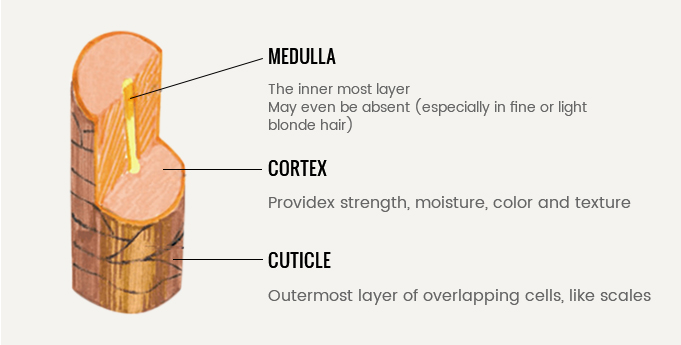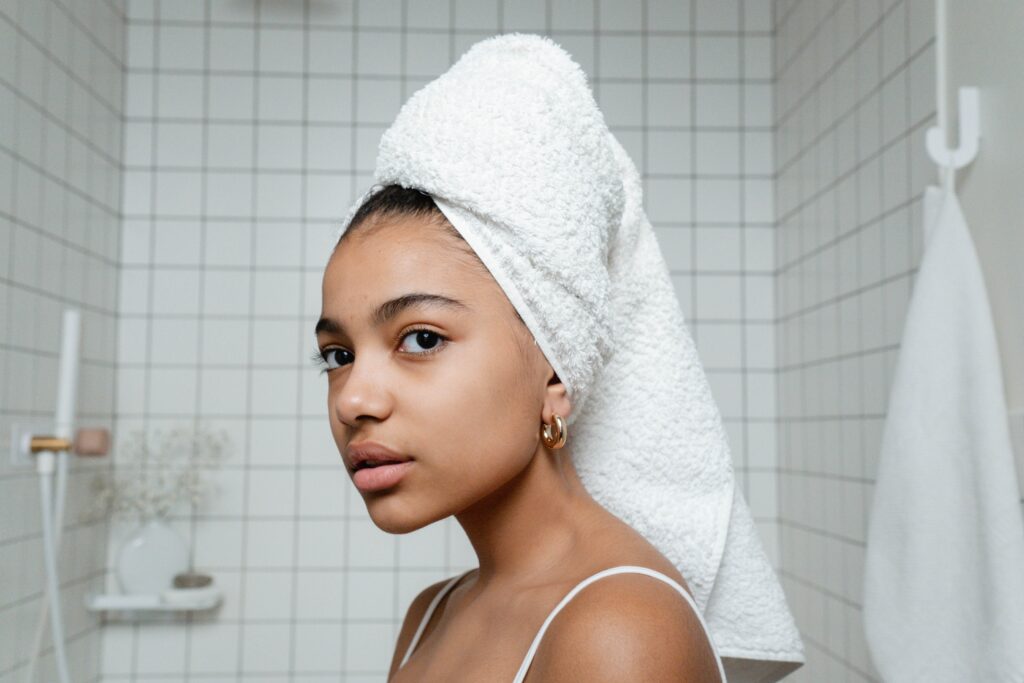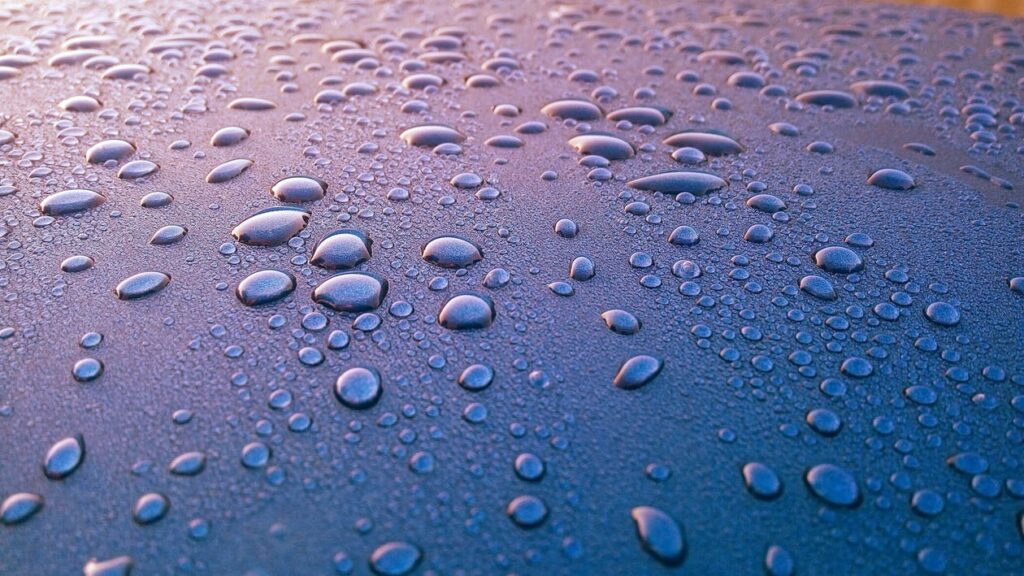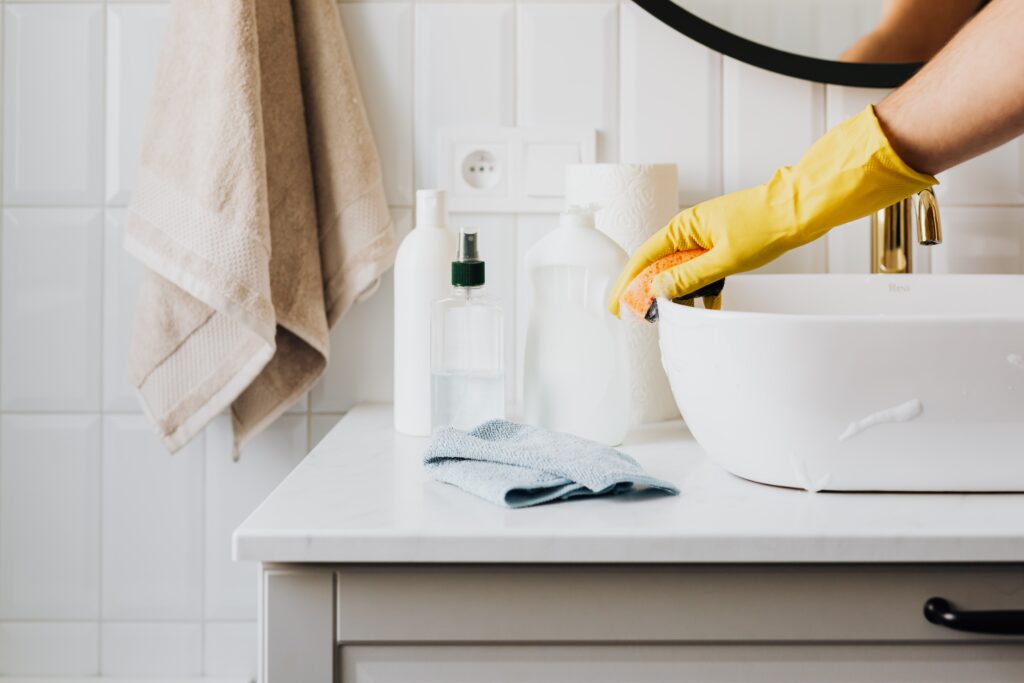Hydration vs Moisturization | Spot The Difference

In the beauty world, I have heard people use hydration and moisturization interchangeably but If you think that the terms “hydrated” and “moisturized” are the same, you are completely wrong.
There is a fine line between the two terms but they are completely different. Your hair might be well hydrated but still feel dry and brittle because it lacks moisture.
In this article, we will uncover the difference between hair hydration and moisturization to help you understand which of these your hair needs.
What’s the Difference Between Hydration and Moisture?

Before we dive into the difference between hydration and moisturization, let’s first understand the different layers that make up the hair. Every single strand of hair is made of three distinct layers: Medulla, cortex and the cuticle.
I love how HAIRSTORY explained these three layers:
- The medulla: A thin tunnel that sits right at the center of each strand – sort of like the stick of graphite in the middle of a pencil
- The cortex: A series of long, thin cells that surround the medulla – almost like flower petals – and give hair its color, texture, and thickness
- The cuticle: This surface layer is also the thinnest and protects the other layers
When your hair is hydrated, it means that the medulla and the cortex have absorbed and retained water which can be lost if not regulated and sealed through the process called moisturization. However, moisturization happens in the outer layer of the hair structure called the cuticle while the process of hydration takes place in the medulla and cortex. A well – hydrated hair is soft, bouncy and strong as opposed to dry, frizzy, scratchy and brittle.
Understanding Hydration Better

It’s very important for our hair to stay hydrated to avoid hair thinning and other problems that accompany dehydrated hair. In simple terms, hydration is the process of replacing the water your body loses and this can be achieved by eating water-heavy foods like fruits(apples, cucumbers, melons, oranges, peaches, pineapples, strawberries, and tomatoes) and vegetables(broccoli, carrots, celery, kale, lettuce, spinach, and zucchini) or simply drinking water and fluids but according to Dr. Howard Murad from the University of California, eating water-heavy foods might be even more beneficial than drinking water alone. “When we eat water-rich foods, we absorb water more slowly because it is trapped in the structure of these foods,” he says. “That slow absorption means the water in food stays in our bodies longer, and brings a multitude of additional benefits.”
Apart from getting hydrated naturally by eating water-heavy foods and taking water, you can also get hydration from other sources like using products that increase the moisture content in your hair strands. Such hair products contain humectants that are responsible for absorbing and retaining moisture.
Understanding Moisturization Better

The term moisture is used to describe the presence of liquid, typically water in the environment and humidity is used to measure the amount of water vapor in a particular area. During humid conditions, your hair tends to absorb this moisture from the air and releases it during drier environments. In the natural hair community, moisturization could be postulated as to how performance properties of water modulation restores moisture to the hair follicles, combats brittleness and dryness of hair strands and restores hair back to a more normal healthy steady-state condition. In simpler terms, hair moisture means the presence of water in your hair.
How Do I Know If My Hair Needs Hydration?

Dehydrated hair is always porous: It puffs up in humid weather, gets frizzy and looks dull. You can use the float test method to determine whether your hair needs hydration. This is how the float test method works:
- Remove any product buildup by shampooing and rinsing your hair.
- Once your hair is dry and clean, pluck out some strands( don’t panic, it will regrow) and drop it in a bowl filled with water.
- Allow it to settle for about 2-3 minutes and observe the position of the strand in the water.
Low porosity hair will settle on top of the water, medium porosity hair will float and stay suspended in the middle while high porosity hair will sink to the bottom of the bowl. Hair porosity helps to determine how much moisture hair needs. High porosity hair absorbs water and products quickly and the moisture is not easily retained in the hair. Previously we explained the three layers of hair and now you must have understood that, cuticle is the outermost layer of the hair. If your hair displays high porosity, that implies that your hair is dry and the cuticle is open and rough. Most times high porosity hair needs hydration but make sure to confirm from your hair care provider.
How Do I Know If My Hair Needs Moisturization?

Weak hair, dullness, split ends, frizz and hard to detangle. These “red flags” will alert you that you may want to consider moisturizing your hair.
If you are experiencing any of these issues, your hair may be dehydrated and in need of moisture. According to curlmix, lack of moisture can be attributed to the use of chemical treatments like bleaching, relaxers, hair coloring, or using direct heat-styling tools (such as flat irons or curling), which cause damage.
Note: The discount code for the week is DRENCH. It expires 10/04/22
Please follow us on Instagram

Comments
No comment yet.